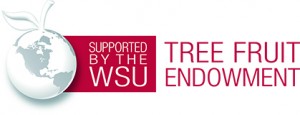NEWS

Gibberellic acid doesn’t need to be applied at high volume to be effective
Most cherry growers worldwide agree that an application of gibberellic acid (typically in the form of GA3) is beneficial for fruit quality on several levels – improved firmness, fewer defects, and, generally, a delay in…

Resources for Little Cherry & X-disease Scouting and Sampling 2022
Multiple resources are available for scouting and sampling of X-disease and Little Cherry disease during the 2022 season.
Evaluations of Conventional and Organic Insecticides Against Leafhoppers: First Year Results
Written by Louis Nottingham, May 2021 Introduction: Prior to this project, there was no available experimental information on insecticide toxicity against X-disease vectors Colladonus Reductus and C. geminatus (Fig 1). In 2020 we performed lab…

Nutrient Management in Sweet Cherries
In perennial fruit trees, most nutrient uptake occurs between bloom and rapid vegetative growth. Sweet cherry root growth starts when soil temperatures reach approximately 59 F during spring, usually after bloom in Washington soils. In…

Oídio del Cerezo
Figura 1. Oídio en frutas de cereza. Imagen cortesía de Claudia Probst y Gary Grove, WSU. Traducido por Jenny Bolivar-Medina. Extensión en transferencia de tecnologías e información (ITT), Washington State University, Mayo 7, 2021. Documento…
Sweet Cherry Breeding Program
Written by Per McCord, May 2021 The WSU sweet cherry breeding program (CBP) has continued to improve and expand since Dr. McCord was hired in April 2018. Laboratory and greenhouse spaces have been upgraded, and…
Pear Psylla Phenology Update
A phenology model for pear psylla was recently developed by Dr. Vince Jones. This model predicts the relative number of pear psylla from each life stage occuring as degree days are accumulated.
LATEST VIDEOS
X-disease Phytoplasma and Little Cherry Virus Scouting and Sampling Guide
WSU and OSU guide for scouting and sampling for X-disease and Little cherry virus. Includes major symptoms, symptom progression, other disorders which cause similar symptoms, scouting and sampling steps, and grower examples.

Symptoms of X-disease Phytoplasma in Stone Fruit
X-disease in peaches, plums and nectarines causes yellow leaves, shot hole and small deformed fruit.

Symptoms of Little Cherry Virus and X-disease Phytoplasma
X-disease phytoplasma and Little cherry virus 2 cause small, pale deformed fruit in cherries. This video shows symptoms in a number of varieties.

Scouting and Sampling for Little Cherry Disease
Tips on scouting and sampling for X-disease and Little cherry disease which cause small, pale unmarketable fruit in cherries.

